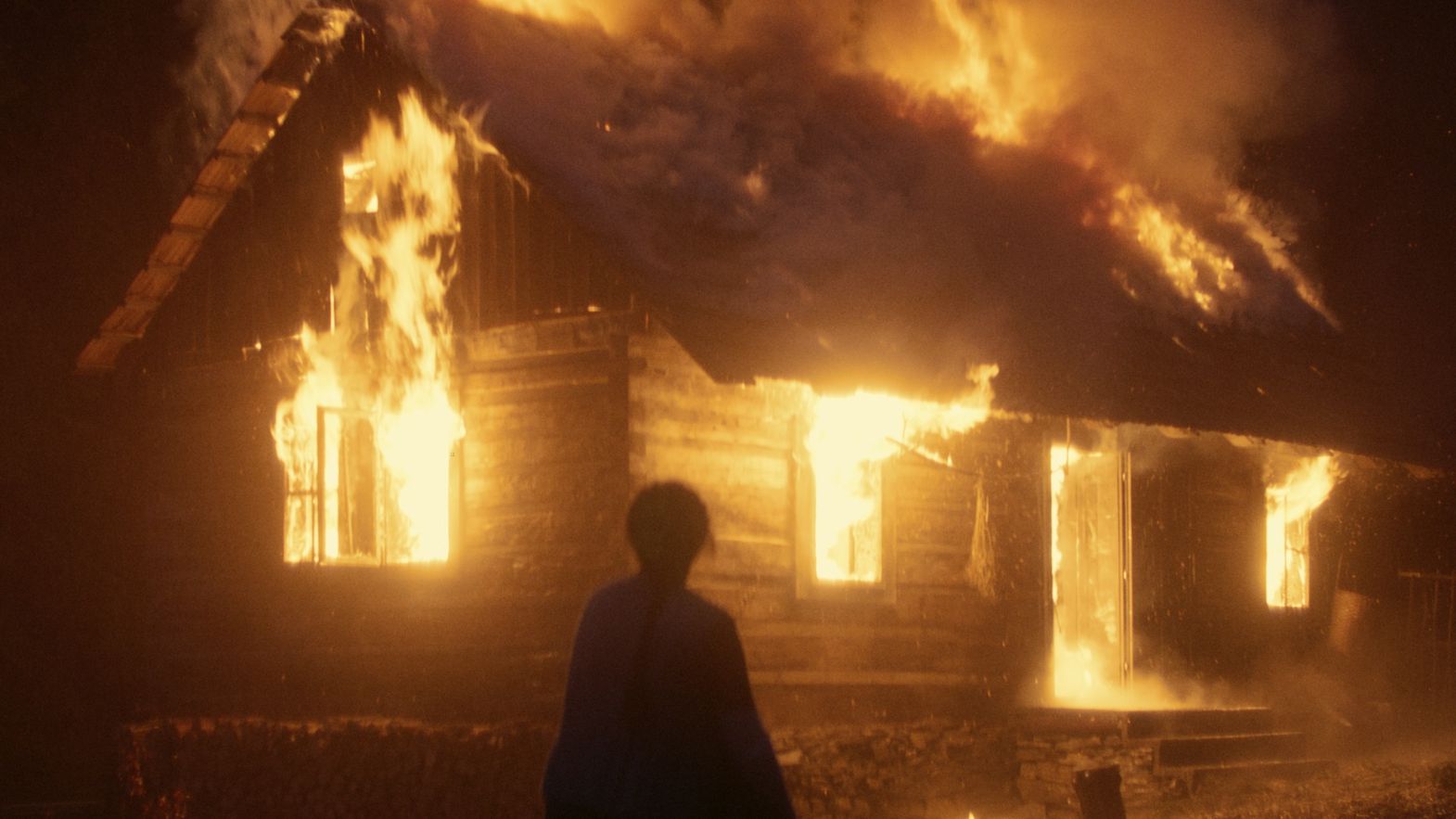It’s a tale at least as old as the Salem witch trials. Where Arthur Miller looked at the mania that gripped early colonial-era Massachusetts and saw a metaphor for the red scare rippling through the United States of his day, in recent years it is ideas around gender that have driven artists to craft stories about witch hunts, both historical and speculative.
Svetlonoc (Nightsiren), the suspenseful, mist-shrouded second feature from Tereza Nvotová, falls into the latter category. The film centers on Šarlota (the wild-eyed Natalia Germani), a young woman who returns to the mountainous Slovak village from which she fled, together with a childhood swiftly revealed to have been punctuated by trauma, some two decades ago. The homecoming is hardly a joyous one: she is met first by the charred ruins of her mother’s old cabin, then by the cagey glances of the village inhabitants. Certainly, her decision to squat in the haunted cabin next door – in Šarlota’s youth, the residence of a woman said to be a witch – doesn’t help endear her to the superstitious locals.
Only one person seems interested in her arrival: Mira (Eva Mores, evoking Leelee Sobieski in a magnetic screen debut) is a herbalist with a brazen streak, and a relative newcomer to the village herself. Like Šarlota, Mira harbors secrets – but both women reject the burgeoning whispers that their bond is one founded in any kind of sorcery. After all, a proclivity for bathing by moonlight or dancing by fire does not a witch make. Try telling that to the townsfolk, though.
With Svetlonoc, Nvotovà extends the unflinching examination of misogyny and victim-blaming that distinguished her debut, Špina (Filthy, 2017), and marked the Slovak director (and documentarian) as one to watch. Working from a screenplay she wrote with Špina’s Barbora Námerová, Nvotová here inflects the iced-out realism of her first film with a neon-spattered burst of the fantastical (let’s just say that Svetlonoc’s coven likes to gather beneath UV light), while the subject matter’s proximity to horror ensures that her aptitude for short, sharp shocks gets put to good use.
While Svetlonoc is certainly indebted to the likes of Robert Eggers’ The Witch (2015) – at times, Nvotovà’s present-day rural Slovakia does not look so different to Eggers’ seventeenth century New England – it ultimately functions as a kind of corrective to that film and its deliciously magical denouement, and perhaps the buzzy feminist reclamation of witchcraft, too. Today as hundreds of years ago, the film seems to argue, the mystification of a woman’s charms, her ways of moving through the world, is an act of othering wont to culminate in flames.
Keva York (Critics Academy)
